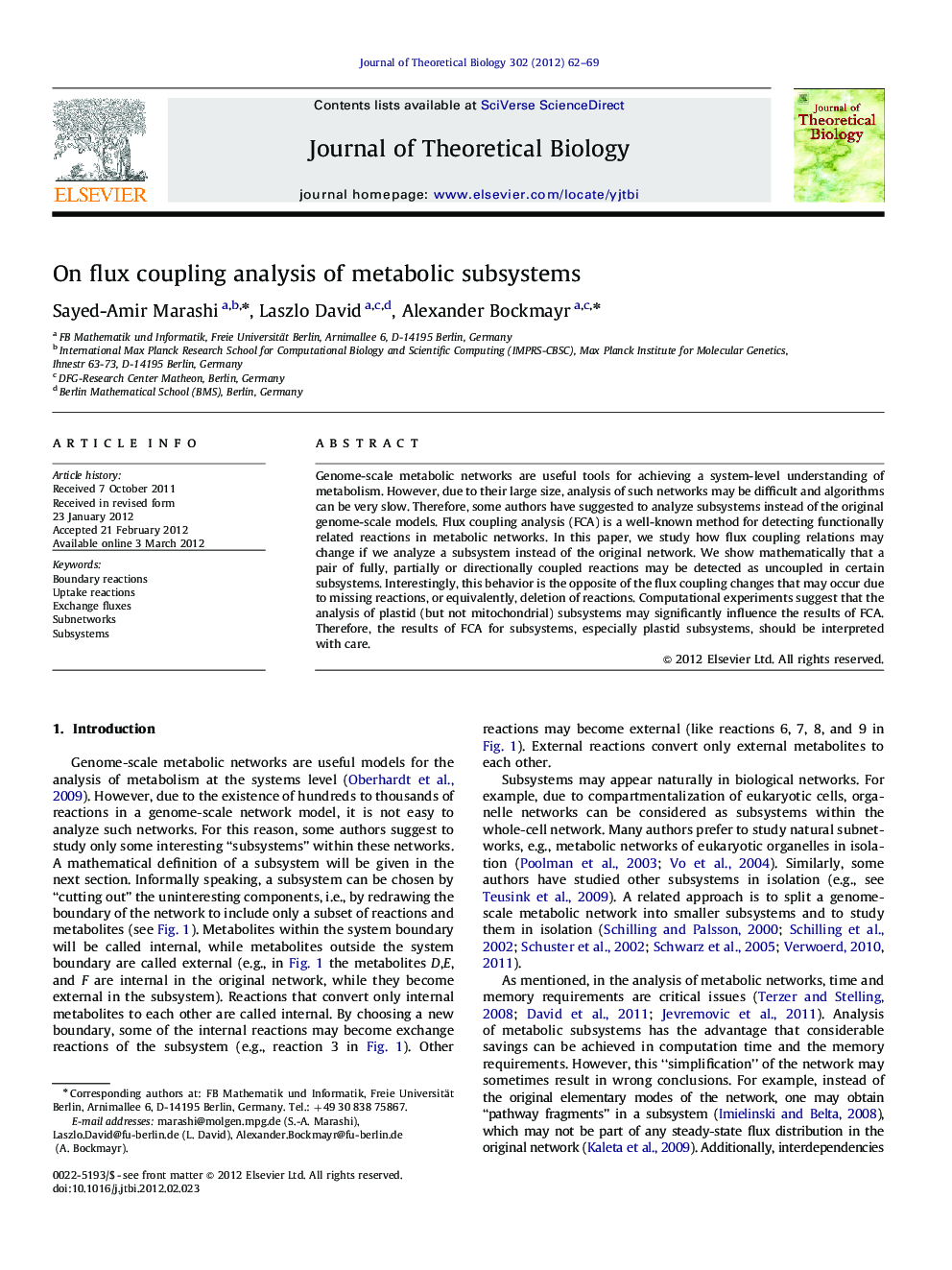| Article ID | Journal | Published Year | Pages | File Type |
|---|---|---|---|---|
| 4496718 | Journal of Theoretical Biology | 2012 | 8 Pages |
Genome-scale metabolic networks are useful tools for achieving a system-level understanding of metabolism. However, due to their large size, analysis of such networks may be difficult and algorithms can be very slow. Therefore, some authors have suggested to analyze subsystems instead of the original genome-scale models. Flux coupling analysis (FCA) is a well-known method for detecting functionally related reactions in metabolic networks. In this paper, we study how flux coupling relations may change if we analyze a subsystem instead of the original network. We show mathematically that a pair of fully, partially or directionally coupled reactions may be detected as uncoupled in certain subsystems. Interestingly, this behavior is the opposite of the flux coupling changes that may occur due to missing reactions, or equivalently, deletion of reactions. Computational experiments suggest that the analysis of plastid (but not mitochondrial) subsystems may significantly influence the results of FCA. Therefore, the results of FCA for subsystems, especially plastid subsystems, should be interpreted with care.
Graphical abstractFigure optionsDownload full-size imageDownload as PowerPoint slideHighlights► Flux coupling analysis detects functionally related reactions in metabolic networks. ► Analysis of genome-scale metabolic networks may be difficult and time-consuming. ► We mathematically study how flux coupling relations may change if a subsystem is considered. ► We also show that for some organelle subsystems, these changes might be significant.
